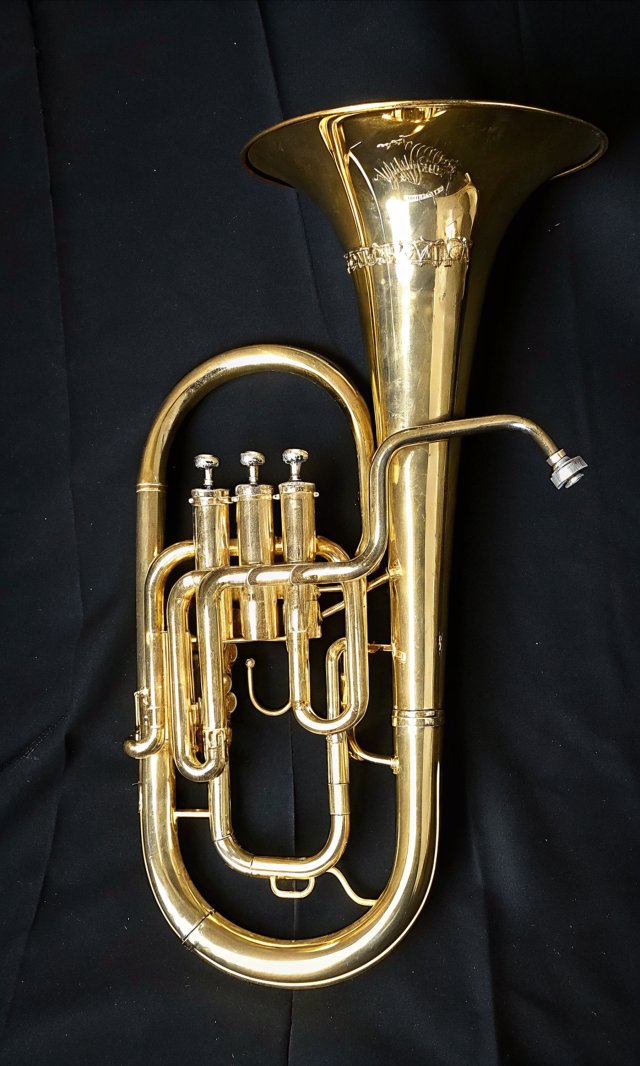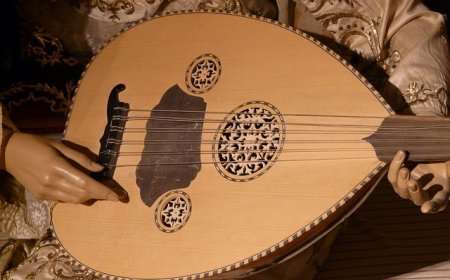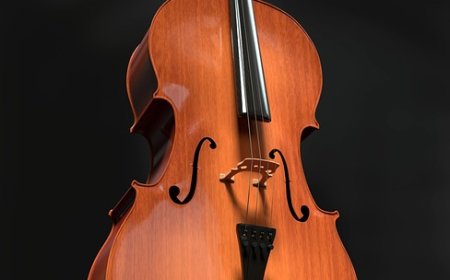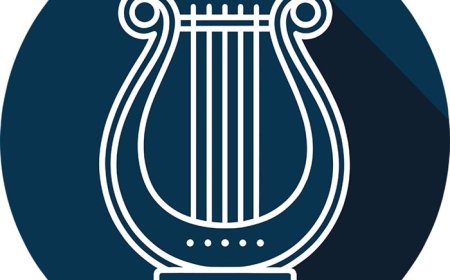Alto Horn Facts for Kids – Learn How It Works and Its Musical Role
Discover alto horn facts for kids. Learn how this brass instrument produces sound, its role in bands and orchestras, and its place in music history.

🎺 All About the Alto Horn
🥇 Introduction
The alto horn, also known as the tenor horn in British brass bands, is a mid-sized brass instrument with a mellow, rounded sound. It is often used in brass bands, military bands, and concert ensembles, where it plays inner harmonies and supporting melodies. The alto horn fills an important role—connecting the high brass (like trumpets) with the lower brass (like tubas). It’s easy to play, has a warm tone, and is perfect for students who want a less demanding instrument in size but still want a beautiful sound.
🎼 What Is an Alto Horn?
An alto horn is a brass wind instrument that is played by buzzing the lips into a mouthpiece and using valves to change notes. It’s shaped similarly to a small tuba or euphonium, with a circular design and upward-facing bell. The alto horn is pitched in E♭, which means it plays higher than a baritone or euphonium, but lower than a trumpet.
In the United States, the alto horn is sometimes confused with the mellophone, especially in marching bands. However, the true alto horn is used mostly in British-style brass bands, where it is a key part of the middle voice section. Its rich, lyrical tone allows it to blend easily with other instruments.
🧩 Parts of the Alto Horn
The alto horn shares many parts with other brass instruments. At the front is the mouthpiece, which is smaller than a euphonium’s but deeper than a trumpet’s. Players buzz their lips into the mouthpiece to create vibrations that travel through the instrument.
Air then moves through the leadpipe and into the main body, which consists of tightly wound tubing. The alto horn typically has three piston valves, although advanced models may have four. These valves redirect the air through extra tubing, which changes the pitch.
At the top of the horn is the bell, which usually faces upward. The bell helps project the mellow sound outward into the band. Like other brass instruments, the alto horn also has valve slides and water keys to help adjust tuning and remove moisture from inside the tubing.
⚙️ How Does the Alto Horn Work?
The alto horn produces sound when the player blows air and buzzes their lips into the mouthpiece. This buzzing creates vibrations that travel through the tubing. When the player presses a valve, the air is redirected through longer tubing, lowering the pitch of the note.
The shape of the alto horn’s tubing is conical, meaning it gradually gets wider from mouthpiece to bell. This gives the horn a soft and rounded tone, unlike the brighter and sharper tone of cylindrical instruments like the trumpet. The result is a warm, blending sound that works well for supporting harmonies.
The alto horn is typically used to play middle-range parts, sitting between the higher trumpets and lower baritones. It’s known for being easy to play and forgiving for young brass players still developing their embouchure and breath control.
📜 History of the Alto Horn
The alto horn was developed in the mid-1800s, during the same period when many valved brass instruments were being invented. Its main purpose was to fill the middle voice in newly popular military and brass bands, where a rich, balanced tone was needed.
It became especially popular in Britain, where the British brass band tradition grew in the 19th century. In these bands, the instrument is always called the tenor horn, even though it plays in the alto range. British composers and arrangers gave the tenor horn an important role, often writing melodic and harmonic parts for it.
Though less common in American concert bands, the alto horn remains a central part of British brass bands, where it plays a key role in musical balance and blend. In marching bands and drum corps, it is sometimes replaced by the mellophone, which has a different design but a similar pitch.
🎷 Famous Alto Horn (Tenor Horn) Players
- Sheona White – A leading tenor horn soloist in the British brass band scene, known for her expressive playing
- Owen Farr – A Welsh tenor horn player and teacher admired for his tone and technique
- Sandy Smith – A top British tenor horn soloist and former principal horn of Black Dyke Band
- Helen Varley – A champion of new solo music for the tenor horn
- Glyn Williams (baritone and tenor horn) – Noted for his versatility and impact on British brass band music
🎶 Learning to Play the Alto Horn
Learning the alto horn is a great way for students to start on a brass instrument that’s comfortable to hold, easy to play, and produces a smooth sound. Its mouthpiece and tubing size make it more forgiving than the trumpet for beginners, especially those who may struggle with high notes.
Students usually start on a three-valve E♭ alto horn and learn to buzz the mouthpiece, play basic notes, and read music written in treble clef. In British brass bands, the alto horn often plays important inner harmonies and occasionally melodic solos. Students will learn breath control, valve fingerings, and musical phrasing as they progress.
The alto horn also provides an excellent stepping stone to larger brass instruments like the euphonium or baritone horn, or to related instruments like the mellophone used in marching settings. It’s a great choice for those who enjoy being the glue that holds the music together.
😄 Fun Facts About Alto Horns
- The alto horn is called the tenor horn in the UK, even though it plays in the alto range.
- It’s most commonly pitched in E♭, placing it between the trumpet and baritone in range.
- The alto horn has a conical bore, giving it a warm and smooth sound.
- It’s a key part of British brass bands, which have a strict instrument lineup including alto horns.
- The mellophone is sometimes used in place of the alto horn in marching bands.
- Despite being a middle voice, the alto horn occasionally gets solo parts in brass band music.
👧 Kid-Friendly Summary
The alto horn is a brass instrument that looks like a small tuba and sounds warm and smooth. You play it by buzzing your lips into the mouthpiece and pressing valves to change notes. It plays notes that are not too high or too low, which makes it great for harmony. People in Britain call it the tenor horn, and it’s used in special groups called brass bands. It’s easy to learn and fun to play, especially if you like supporting the music from the middle!
📚 Vocabulary Words
Alto horn – A mid-range brass instrument used in bands, also called the tenor horn
Tenor horn – The British name for the alto horn
Conical bore – Tubing that gradually widens, creating a soft, mellow tone
Valves – Buttons that change the pitch by redirecting air through tubing
Bell – The flared end where sound comes out
E♭ pitch – The key in which the alto horn usually plays
Embouchure – The way a player shapes their mouth and lips to produce sound
Treble clef – A way of writing music used by alto horns and other higher instruments
❓ Interactive Quiz
1. What is another name for the alto horn in British brass bands?
A. Flugelhorn
B. Mellophone
C. Tenor horn
D. Baritone horn
2. What is the typical pitch of the alto horn?
A. B♭
B. C
C. F
D. E♭
3. What shape is the tubing of an alto horn?
A. Cylindrical
B. Square
C. Conical
D. Spiral
4. What kind of music group commonly uses the alto horn?
A. Jazz combo
B. Rock band
C. British brass band
D. String quartet
5. What do valves on the alto horn do?
A. Make the bell louder
B. Control the air pressure
C. Change the pitch
D. Adjust the color





















































